Less than a year after finishing high school, at just 18, Chuck Anderson launched his own creative studio. Three years later and he’d produced the photography and design for Lupe Fiasco’s Grammy-nominated album Food & Liquor; the distinctive photo treatment and lighting effects used rapidly having become a signature style that had seem his NoPattern studio become internationally-renowned in design circles.
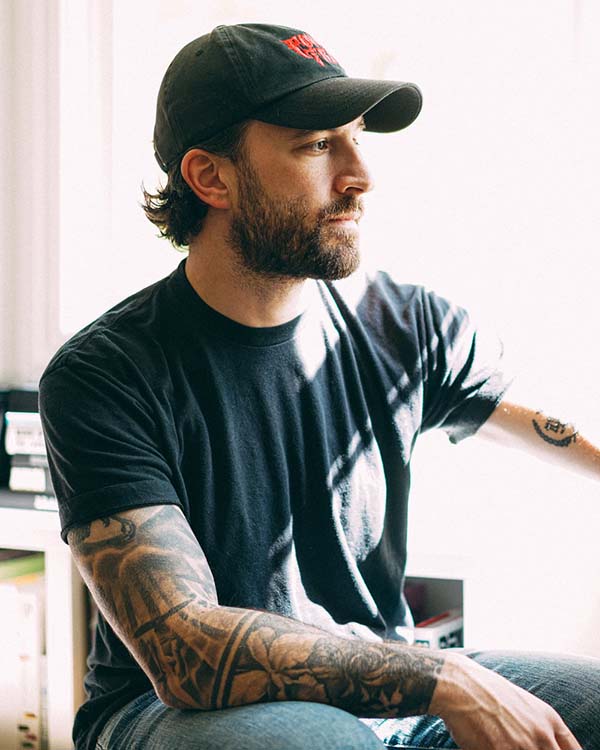
That acclaim led to Chuck being headhunted to design Windows 7’s default wallpaper and login screen. His personal work, Places You Can’t Imagine, became one of the world’s most ripped-off images. Aged 20, the Chicago-based creative was the youngest ever to judge at the Annual Art Directors Club Awards; at 25 he was named a Design Icon by Computer Arts Magazine. Working for everyone from Nike to Vans, TIME to the Chicago Bulls, Chuck Anderson was a viral design star before the age of social media.
Now a veteran of the design world, Anderson will talk at this year’s ‘creative theme park’, Us By Night, Antwerp; holding court on the intimate Living Room stage. Set to be joined by the likes of Camille Walala, Grilli Type, Ezra Miller and Hassan Rahim, We Heart spoke to Chuck about growing up in design, defining your style, and what he expects from the fourth edition of Rizon Parein’s brilliant nightlife-skewed creative symposium; this year with a change of venue and increased capacity of 2,500 each night at Antwerp’s industrial ‘riverside castle’, Waagnatie.
You began NoPattern as a fresh face in the design world, 16 years later, what has changed in the way you approach work, and what are the biggest lessons you’ve learned?
The biggest and most important thing that’s evolved has been my taste level, and sense of control and editing in my work. The early days of NoPattern was just overwhelming colour and intensity. As I’ve gotten older and more experienced I’ve come to appreciate nuance and subtlety more, while finding ways to stay true to what got me here. One thing that hasn’t changed at all is my love of experimentation and reinvention.
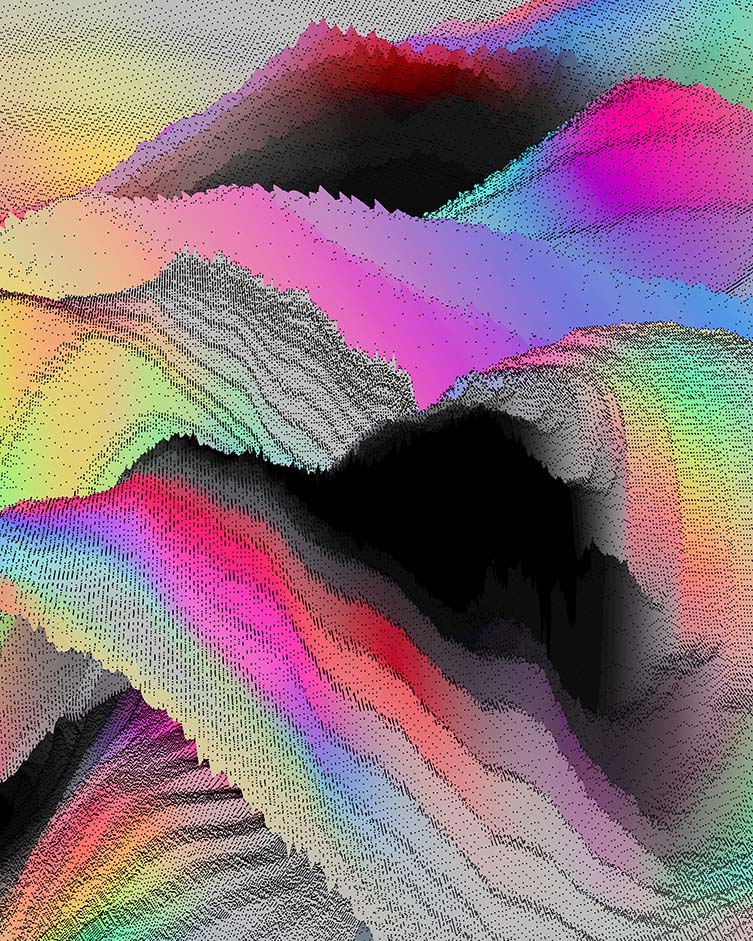
Alpha Waves, experimental 3D graphics.
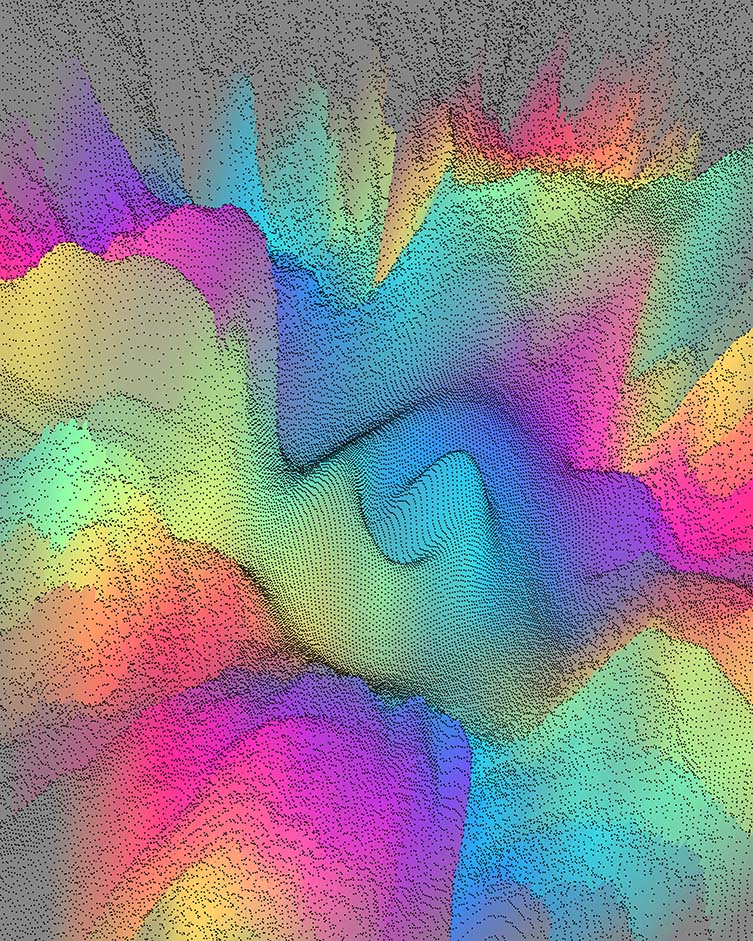
I just feel like I’m constantly evolving and changing what I’m after, which is a gift and a curse. I tend to get bored easily and want to find a new challenge. I’m not sure there’s a lesson in that other than perhaps when you find something you’re really excited about—some sort of body of work you’re working on, or a project that makes you feel really alive, those feelings that got you into your field in the first place—don’t take that for granted. That’s lightning in a bottle. Make the most of it.
You arrived at a good time, before the days of internet clutter we experience today. How do you feel things have changed in terms of getting your work out to the right audience, do you think you could still make such an instant bang today?
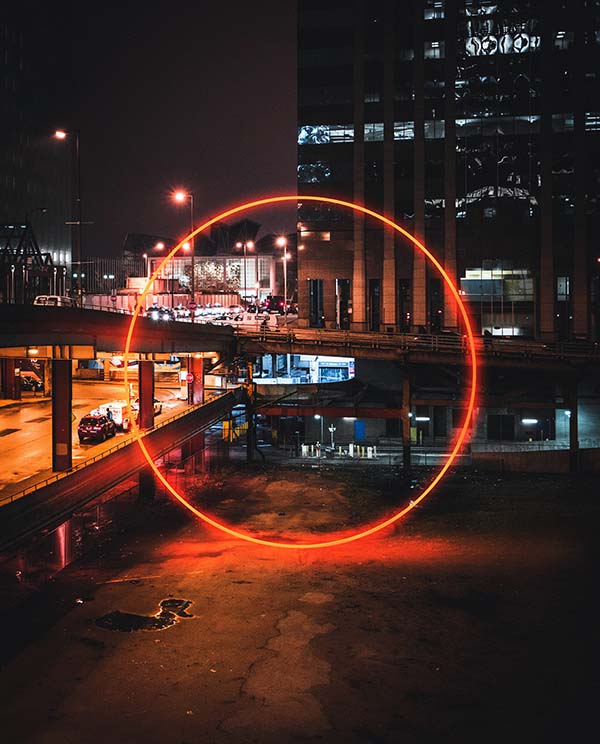
Futuresculptures.
Wow, where to even begin. I started as a young, eager, excited 18 year old child of the internet. Things were so different when I started. The landscape of design as we know it today was completely different in 2004. Social media didn’t exist yet beyond MySpace, which wasn’t really any sort of serious professional tool the way we think of Instagram or Twitter today. What I always say about the difference of now and then is, that back when I started, I felt like I was facing virtually zero competition for potential clients. I started out so scrappy by guessing the email addresses of creative directors at magazines, studios, etc. It just wasn’t the bombardment of self-promotion you see today.
I didn’t feel like other people were vying for the attention of people like I was, and I got a lot of work early on as a result. Today, there are 1,000 times the amounts of ways to go about connecting with people. That’s great, but the downside is the market is infinitely more crowded. However, what’s most important to me, above all else, is that young people—and anyone really—have a chance to have a voice. Despite all the downsides that come with social media, there is no doubt that we are in a golden age of self-promotion. If you have something you want to express or show off or sell, there are platforms for you. Now it’s just a matter of what you do with those.
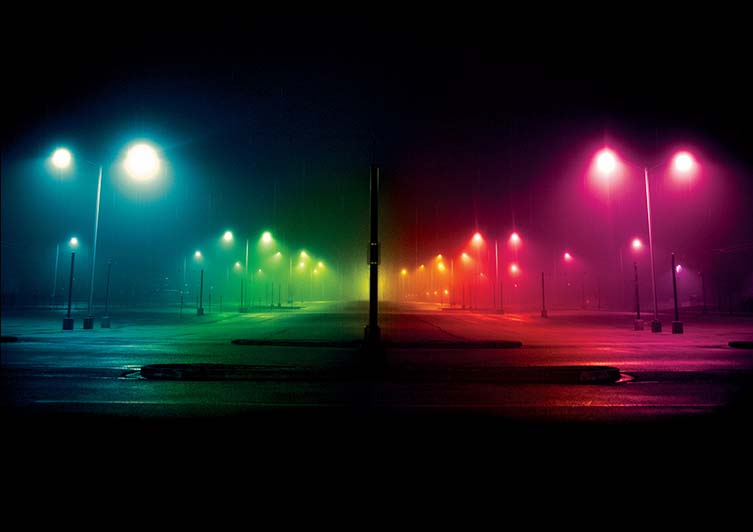
Places You Can’t Imagine, 2006, quickly became one of the world’s most stolen images.
Those colourful lighting effects quickly became your signature, but as quickly got copied. Is imitation the highest form of flattery?
The thing about a lot of the copying that has occurred with my work is that it’s such an elusive, enigmatic kind of thing. It’s not like somebody copying the work of a designer like David Rudnick, for example, where one could point to very particular nuances of a font and say: look, this person clearly lifted ‘this’ from ‘that’. I don’t have some sort of trademark ownership to the use of glowing light and colour. It’s a very ‘you know it when you see it’ sort of thing.
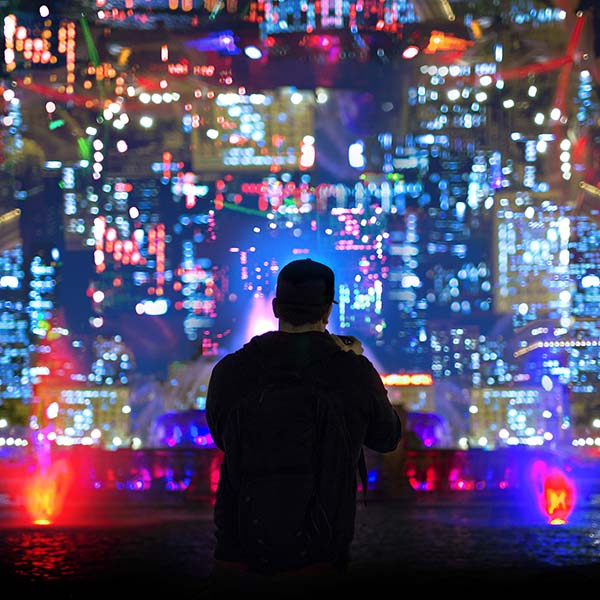
Then again, there have been many instances where my work has very literally been stolen; taken right off my site, or god knows where on the internet, and just dropped into a flyer or background at a concert. For example, Counting Crows used my work in the background of a set at the O2 Festival many years ago without permission. That’s kind of a different story. I could ramble on this forever …
I think the point for me was to always to move faster than people could copy. As soon as I saw someone imitating what I was doing, I wanted to be on to the next evolution of that thing. Imitation is very flattering to me, but I hope those people are simply using that imitation as a means to experiment from a technical perspective to advance their own abilities, not simply to just say “look what I made”. We all, every one of us, copy artists we look up to at some point to some degree, especially when first starting out—but how quickly you progress to developing your own unique voice is what’s most important.
What can we expect from your talk at this year’s Us By Night?
I have been working on a particular body of work this year that is culminating in an exciting new personal project this fall, so I’ll be talking about and exploring a lot of that work. It’s all experimental 3D work I’ve done in Photoshop, very sort of esoteric and strange, but really fascinating to me.
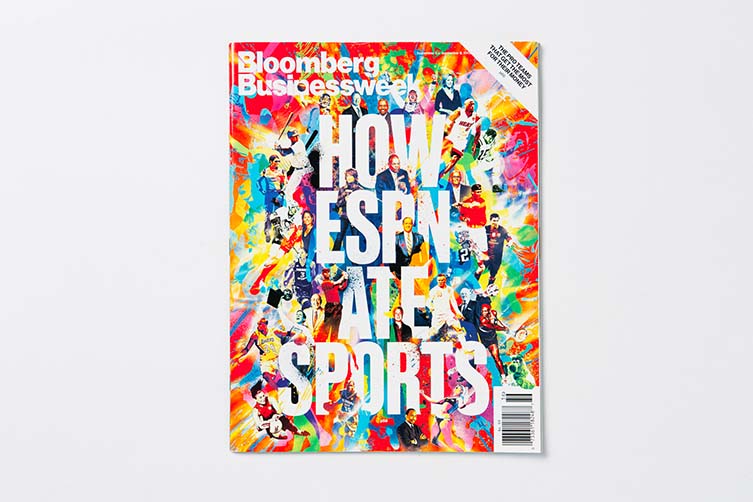
Bloomberg Businessweek ESPN Cover
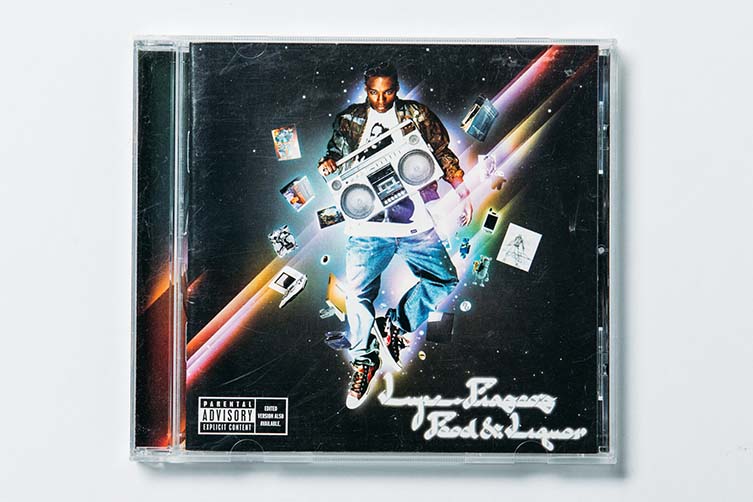
Lupe Fiasco, Food & Liquor Album Artwork
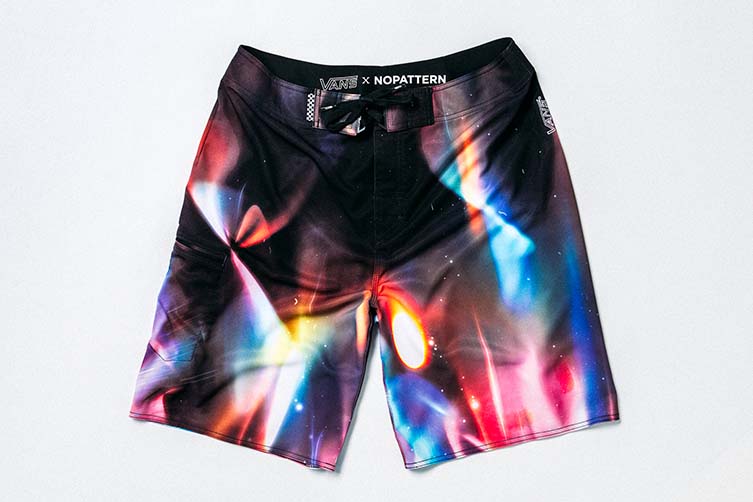
NoPattern x Vans Surf 2010
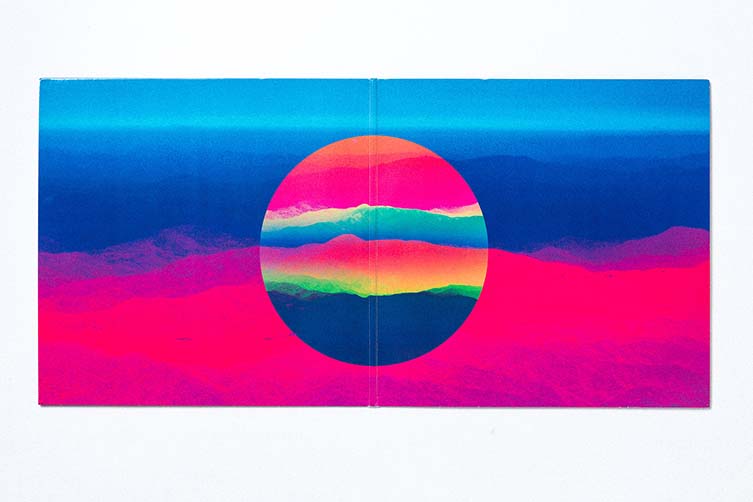
Mike Gordon, Overstep Album Artwork
I will of course share about the backstory of my career and talk business as well, I think people enjoy those stories that humanise the person with the microphone. I’ve spoken at countless conferences, schools, and such over the years, and my favorite format is always sharing my work then leaving plenty of time for conversation. I am not interested in one-way dialogue where I just talk, talk, talk, and then say thank you. I want to interact, be challenged, and speak with people who have taken the time to listen to me.
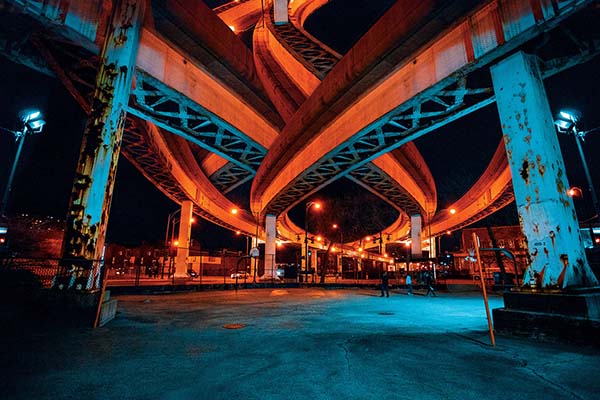
Unreal Architecture.
What do you know about Us By Night, and who are you looking forward to seeing yourself?
I know that last year, when I first discovered Us By Night, I took one look at the lineup and thought: “wow, I might need to fly myself to Antwerp next year, because whoever is putting this lineup together really knows what the hell they’re doing.” Joshua Davis; Eric Hu; Yuko Shimizu; Hotel Creative; Haw-lin; Vasava; Wade and Leta to name just a few … it just got me really excited about the festival. Then I was invited to actually come and be a speaker and felt quite humbled.
I am proud to have a place in this and look forward to sharing what I’ve been up to with an international audience. As for people I want to see this year? Of course I’m attending this as much as a fan as I am a speaker. Hassan Rahim; Grilli Type; Karan Singh; Ezra Miller; Ada Sokol; Sucuk … that’s barely scratching the surface. I’m especially excited to share the bill with Hassan, Karan, and Ezra. These guys are some of the absolute best in the world and inspire me on a daily basis.








